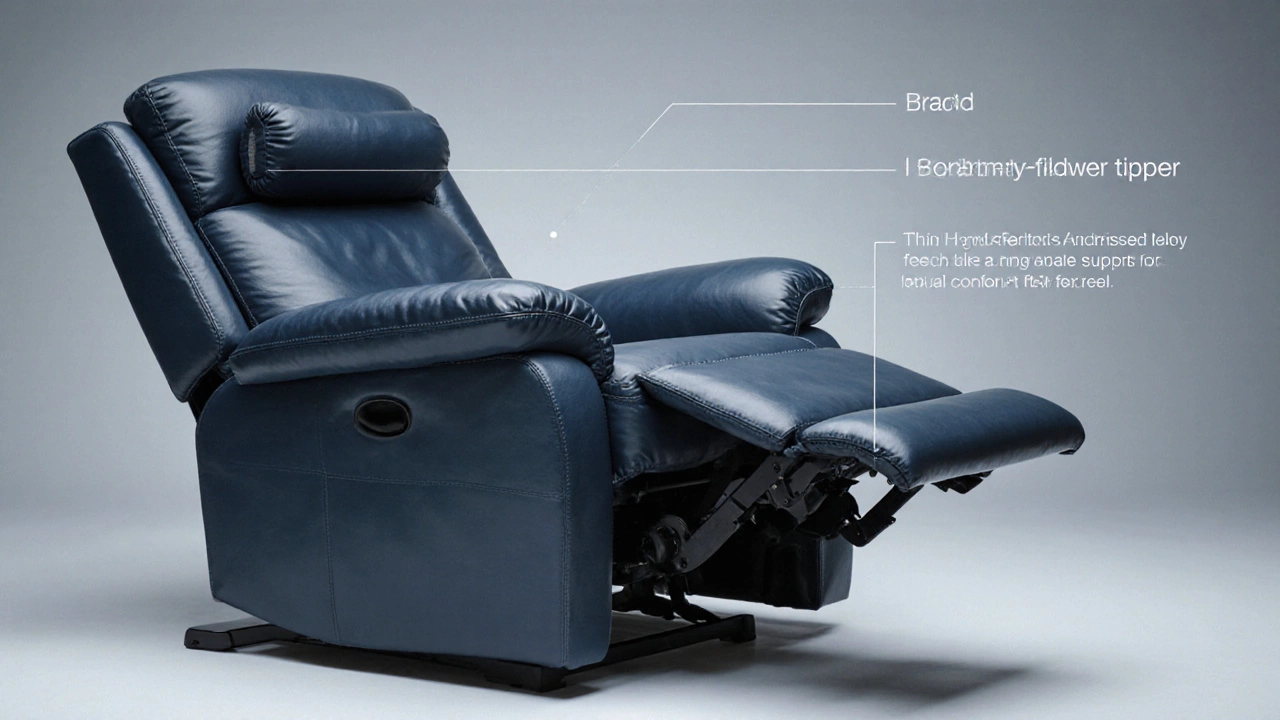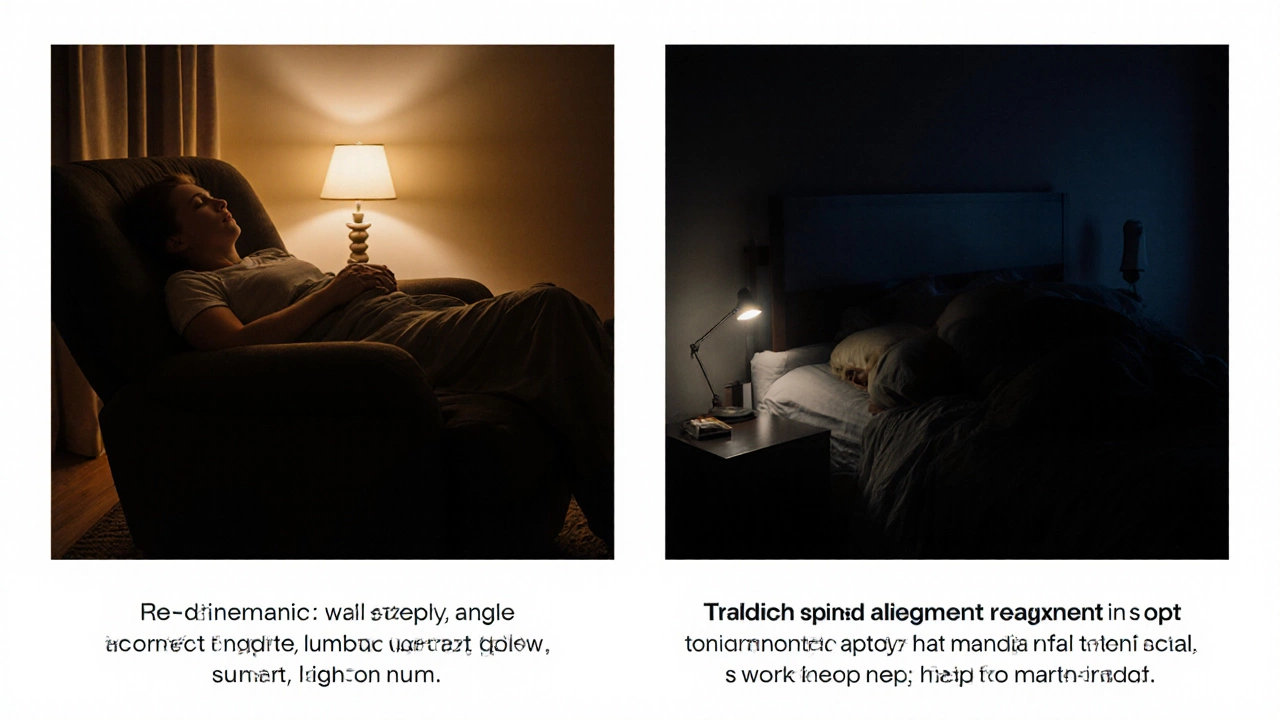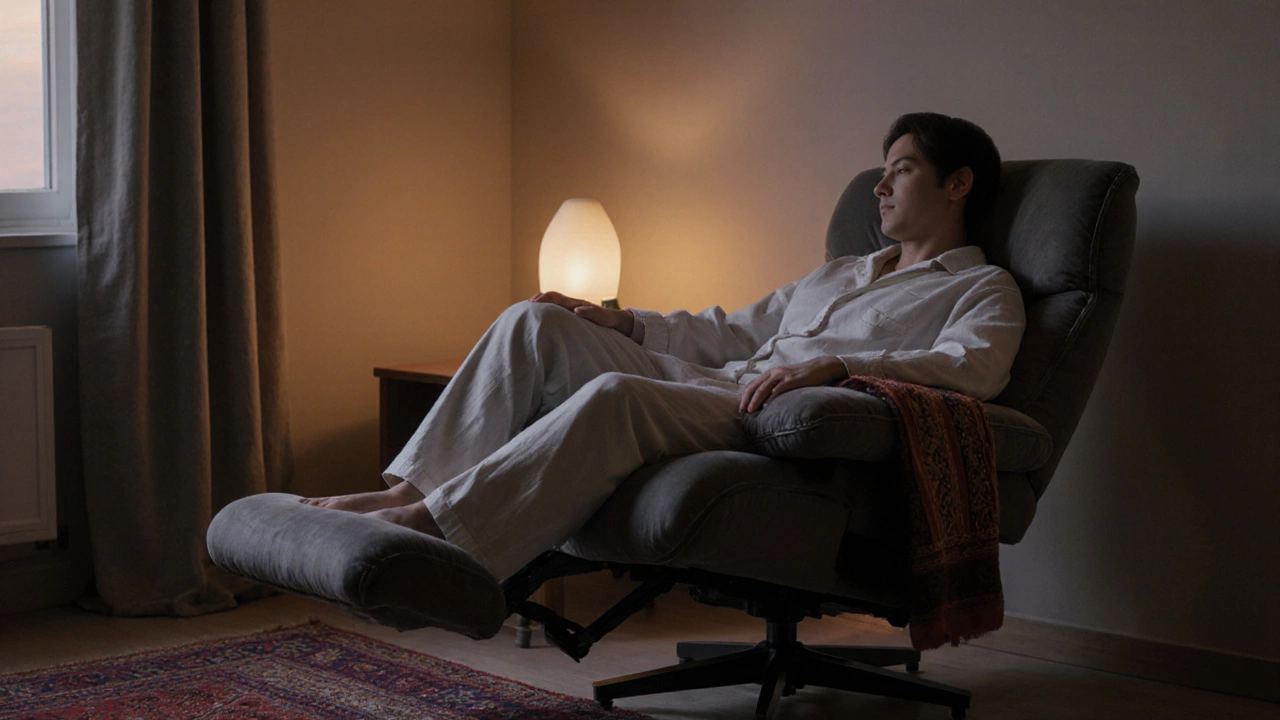Recliner Sleep Safety Checker
Many people wonder if they can comfortably sleep in recliner every night without harming their bodies. The idea feels tempting - a soft, supportive seat that swivels, a built‑in footrest, and the convenience of not having to get out of bed for a quick nap. But before you make a recliner your nightly bedroom, let’s break down what the science says, what to watch for, and how to set it up for the best possible rest.
What a Recliner Chair Actually Is
Recliner Chair is a type of upholstered seat that tilts backward and extends a footrest, allowing the user to shift between upright and lying positions. It often includes built‑in lumbar support, adjustable headrests, and sometimes heat or massage functions. First popularized in the 1950s, modern recliners use power motors or manual levers to achieve a range of angles, typically from 90° to 135°.
How Sleep in a Recliner Differs From a Bed
Sleeping on a recliner changes three core factors that affect nightly rest: support surface, body angle, and space for movement.
- Mattress is a flat, cushioned platform designed to distribute weight evenly across a horizontal plane. Beds combine a mattress with a sturdy frame, giving the body a neutral, horizontal alignment.
- Spinal Alignment refers to the natural curvature of the vertebrae when the body is supported. A well‑designed mattress promotes neutral alignment, while a recliner forces the spine into a sloped position.
- Space inside a recliner is limited; you can’t stretch out your legs or shift positions as freely as on a full‑size bed.
Potential Health Benefits (When Done Right)
If you set up a recliner correctly, you can gain a few short‑term advantages.
- Pressure Points are areas where the body contacts a hard surface, often causing discomfort. A recliner’s padded cushion can reduce pressure on the hips and shoulders compared to a hard floor.
- Elevating the legs can improve Blood Circulation in the lower extremities, especially for people with varicose veins or swollen ankles.
- For those with chronic back pain, a recliner that offers firm lumbar support can temporarily relieve stress on the lower back.

Risks You Should Watch For
Sleeping in a recliner nightly isn’t without drawbacks. The most common issues stem from compromised Sleep Quality, which can cascade into broader health concerns.
- Spinal Misalignment: When the recliner is angled beyond 110°, the lumbar curve flattens, forcing the spine into a semi‑flexed position. Over time, this can strain intervertebral discs and lead to chronic pain.
- Restricted Movement: Limited legroom prevents natural tossing and turning, which may increase stiffness in the hips and knees.
- Sleep Apnea Exacerbation: A semi‑upright position can keep the airway more open for some, but for others it may worsen apnea episodes if the headrest doesn’t align properly.
- Reduced Deep Sleep: Studies show that sleeping on a sloped surface can lower the proportion of slow‑wave (deep) sleep, affecting recovery and memory consolidation.
Ergonomic Checklist for Nightly Recliner Sleep
Before you commit to a recliner as your primary sleeping spot, run through this quick audit.
- Angle: Aim for a recline between 100° and 110°. Anything steeper pushes the hips too far forward.
- Back Support: Ensure the lumbar pad sits snugly in the natural inward curve of your lower back.
- Headrest Height: Your head should be level with or slightly above your shoulders to keep the neck neutral.
- Footrest Position: Feet should rest flat on the footrest without hanging off the edge.
- Cushion Firmness: Choose a firm yet contoured cushion that mimics a medium‑firm mattress-soft enough to be comfortable but supportive enough to prevent sinking.
- Breathability: Look for breathable upholstery (e.g., leather or mesh) to avoid night sweats.
Comparison: Recliner vs. Standard Bed
| Factor | Recliner | Bed |
|---|---|---|
| Spinal Alignment | Often angled; can flatten lumbar curve | Neutral horizontal position |
| Pressure Distribution | Localized; depends on cushion density | Even across entire surface |
| Leg Mobility | Restricted by footrest size | Full range of motion |
| Temperature Control | Often warmer due to upholstery | Varies with mattress type and sheets |
| Ease of Entry/Exit | Simple; lever or button assists | Requires sitting up, then rolling |

How to Optimize Your Recliner for Better Sleep
Even if you decide to keep using a recliner nightly, a few tweaks can make the experience healthier.
- Add a thin, high‑density memory foam topper (about 2‑3cm thick) to improve pressure distribution without altering the recline angle.
- Place a lumbar roll or rolled‑towel behind the lower back if your recliner’s built‑in support is too soft.
- Use a breathable pillow that aligns the neck with the spine; a cervical pillow works well for semi‑upright positions.
- Install a small night‑light or dim lamp to reduce sleep disruption from sudden illumination.
- Set a bedtime alarm on your phone to remind you to switch to a regular bed on weekends, helping maintain a regular sleep‑architecture pattern.
When to Switch Back to a Traditional Bed
Listen to your body. If you notice any of the following, it’s time to reconsider your nightly recliner habit:
- Persistent lower‑back or neck pain that worsens after waking.
- Stiffness in the hips, knees, or shoulders after a night’s sleep.
- Decreased energy, trouble concentrating, or mood swings.
- Worsening of existing sleep disorders, such as apnea or insomnia.
In those cases, using the recliner for short naps (30‑45 minutes) rather than a full night’s sleep can still provide comfort without the long‑term drawbacks.
Frequently Asked Questions
Can I set up a recliner in my bedroom without disrupting the room’s aesthetics?
Yes. Choose a recliner that matches your existing décor-neutral fabrics, wood‑tone legs, or a sleek leather finish. Adding a matching side‑table and a soft throw can blend it seamlessly into the bedroom’s look.
Is a recliner safe for people with chronic back conditions?
It depends on the condition. If a doctor has prescribed a specific lumbar support angle, a recliner that can be precisely adjusted may help. However, for severe spinal degeneration, a firm mattress with a supportive pillow is usually safer.
How long can I safely sleep in a recliner before it affects my health?
Most experts recommend limiting nightly recliner use to a few weeks while you monitor how your body reacts. If after a month you still feel rested and pain‑free, the setup may be acceptable, but a regular bed remains the gold standard for long‑term health.
Does sleeping in a recliner improve snoring?
A semi‑upright position can reduce snoring for some people by keeping the airway open. However, if the headrest is too low or the neck is bent, it might worsen the noise. Experiment with small angle adjustments and a supportive pillow.
What’s the best type of pillow to pair with a recliner?
A cervical or contour pillow that supports the natural curve of the neck works best. Look for one that’s firm enough to hold its shape at a 100°‑110° recline angle.
Bottom Line
Sleeping in a recliner can be a convenient short‑term solution, especially if you need a quick, elevated nap or have limited space. However, for nightly rest, the potential drawbacks-spinal misalignment, reduced deep sleep, and possible aggravation of existing health issues-usually outweigh the benefits. If you decide to give it a try, follow the ergonomic checklist, keep the recline angle moderate, and supplement the seat with a firm foam topper and proper neck support. Most importantly, keep an eye on how your body feels each morning and be ready to transition back to a regular bed if discomfort appears.

